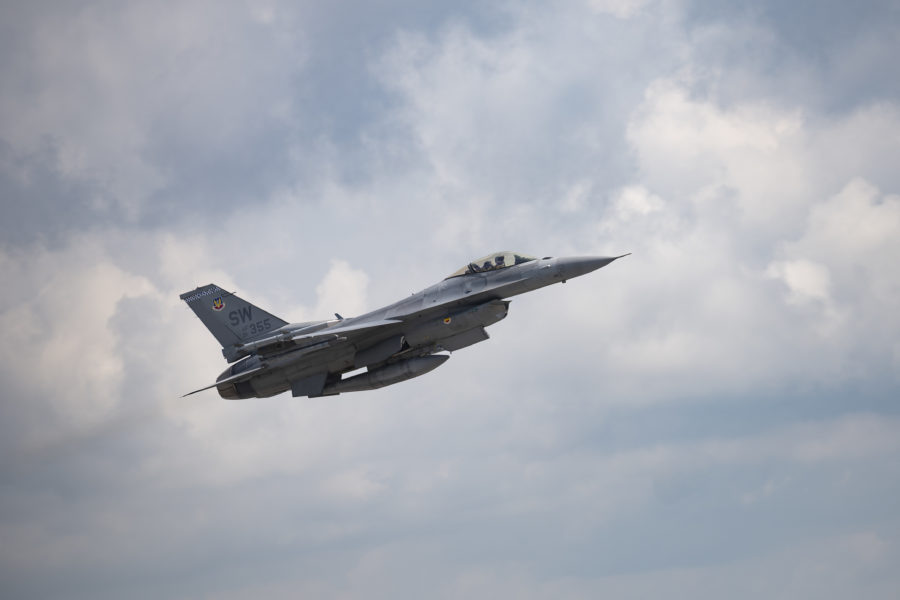The Biden administration’s long-awaited decision to support a European effort to train Ukrainian pilots on F-16s is the first step in a lengthy process to transform Ukraine’s Soviet-style air force into a Western one, a pair of retired high-ranking U.S. Air Force generals told Air & Space Forces Magazine.
“It’s not about delivery just now,” said retired Gen. Philip M. Breedlove, the former NATO Supreme Allied Commander. “Ukraine is going to need an air force to defend itself because Russia will be back.”
Less clear is whether Ukraine will field the aircraft in time to influence developments on the battlefield this year.
The U.S. has aided Ukraine’s air force so far by providing munitions, including High-Speed Anti-Radiation missiles (HARMs) that the Ukrainians have jerry-rigged to operate from their aging Soviet-era planes. In recent months, the U.S. has also provided extended-range JDAM guided bombs.
Poland and Slovakia are providing Ukraine with MiG-29s from their inventories. But there is no debate the F-16 will mark a quantum leap over the planes currently in Ukraine’s inventory.
“The integration of avionics, weapons systems, and weapons are decades ahead of what they’re flying now,” Breedlove said. “There will be an increased capability, increased radar range, increased weapons range, etc. But this is not the be-all to end-all.”
Ukrainian officials have expressed hope they will be flying the planes by the fall, but some U.S. officials said they cannot guarantee the aircraft will be in Ukraine’s hands before the end of the year.
A U.S. Air National Guard analysis assessing Ukrainian pilots’ skills, reported by Yahoo News, said they could be trained to operate the plane in as little as four months. It could take months more, however, to turn those pilots into airmen who can hold their own in combat and make full use of the F-16’s attributes, experts said.
If Ukrainians are not thoroughly trained in Western tactics, “you’re not going to realize any of the benefits of having a real four-plus generation aircraft,” said Breedlove, a former F-16 pilot. “If you take an F-16 and fly it and use it like a MiG-29, you’re just going have a hotrod MiG-29, and that’s it.”
Still, the time needed is likely far short of the 18 months the Pentagon previously cited as the fastest possible timeline.
“We always overestimate how long it’s going to take to bring a new weapons system into the Ukrainian military,” Breedlove said. “They can clearly outperform our expectations.”
For now, Ukrainian forces are expected to rely on HIMARS rockets, armor, artillery, and British Storm Shadow missiles as they seek to bust through Russian defensive lines during their planned counteroffensive.
“If they are not successful in their counteroffensive, then everything else is largely a moot point,” Pentagon Press Secretary Brig. Gen. Patrick S. Ryder said May 23 when pressed on specifics about the provision of F-16s.
Until last week, the White House had held back from facilitating Ukraine’s acquisition of F-16s because it was worried that supplying Ukraine with the planes risked escalation with Russia and because of concerns the aircraft would not survive Russia’s formidable air defenses.
Instead of aircraft, U.S. officials have focused on providing Ukraine with air defenses, which has resulted in largely mutually-denied airspace over the country. But some F-16 proponents argue that since Ukraine’s counteroffensive is so critical, the U.S. should have been quicker to supply Kyiv with Western aircraft.
Retired Air Force Maj. Gen. Larry Stutzriem, a former F-16 pilot and director of research at the Mitchell Institute for Aerospace Studies, said military planners should not throw up their hands but should use drones, electronic warfare, countermeasures, and real-time targeting to enable Ukraine’s air force to find pockets in which it can operate and strike. Stutzriem said it’s not about only the aircraft, but the integration of many capabilities to gain air superiority. Then, the fighter can strike Russian forces and their logistics.
“It can go fast with great flexibility to strike the adversary in depth, not merely where the land forces engage along a front,” Stutzriem said. “That’s why airpower was invented, to rise above the trenches and slog of land warfare.”
